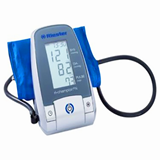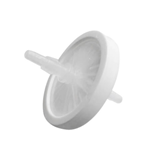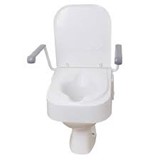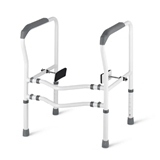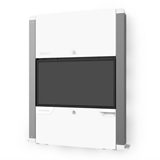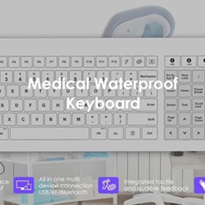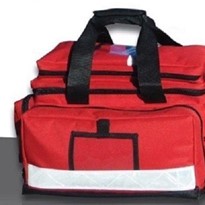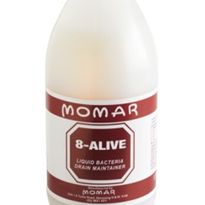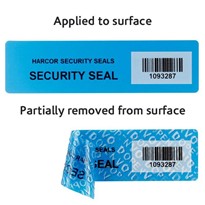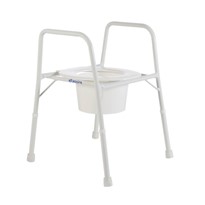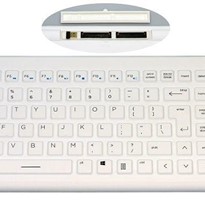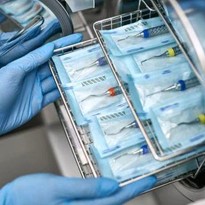Are There More Bacteria on Computer Keyboards Than Toilet Seats?
National Center for Health Research (NCHR)
We all try to keep our kitchens and bathrooms clean and bacteria-free. But how clean are our offices, computers, and keyboards? Most of us spend many hours every week typing at a computer, but rarely think to clean it. How dirty can our desks get?
Keyboards and Bacteria
Research from the Swinburne University of Technology in Australia studied the amount and type of bacteria on personal faculty keyboards and shared keyboards and other surfaces around the university. They found that keyboards can have high levels of bacteria on them and that shared keyboards tend to have more bacteria than those used by only one person.[1]
Even more disturbing, research by University of Arizona researchers also found that the average desktop has 400 times more bacteria than the average toilet seat. That study took samples from offices across the United States, and also showed that women’s desks tended to harbor more bacteria than men’s.
A study at Chicago’s Northwestern Memorial Hospital found that two deadly drug-resistant types of bacteria (vancomycin-resistant Enterococcus faecium (VRE) and methicillin-resistant Staphylococcus aureus (MRSA)) could survive for up to 24 hours on a keyboard, while another common but less deadly bug (Pseudomonas aeruginosa) could survive for an hour.[2]
How Do Bacteria Get on Your Desk and Keyboard?
Most of the bacteria found by researchers are types that tend to live on people, usually in our skin and in our mouths and nasal passages. So it is likely that most of the bacteria came from our hands.
Although many of these bacteria won’t hurt you unless your immune system is weak because of another illness, it could still cause an infection in you have a cut on your fingers (even a tiny one you can’t see).It is still wise to be careful, especially if you are sharing a computer with other people. For example, if the person who used the keyboard before you was coming down with the flu, it is possible that you could catch the flu from using the keyboard afterwards.
A good precaution is to wash your hands before and after using a shared computer, telephone or other equipment and to encourage others to do the same. It is not a good idea, either, to eat at your computer, especially if you share it with others. When you eat and then type, you are probably transmitting bacteria from your mouth to the keyboard (not to mention getting crumbs everywhere).
Hospital Computers
With more and more doctors switching to electronic patient records, keyboard bacteria are becoming a problem in hospitals as well.
This could lead to serious problems in hospitals since many people could potentially use the same computer and then transmit the bacteria to patients. People who are already sick may be more vulnerable to bacterial infections, so hospital patients may be more likely to become seriously ill from bacteria transmitted from computers and health care workers’ hands.
Researchers have found that a good way to prevent the transmission of this type of infection is for health care workers to wash their hands and to have computer keyboards disinfected on a regular basis.[3] [4]
What Can You Do to Keep Your Computer Clean?
Remember that everything you touch does not have to be sterile in order to be safe. There are bacteria all around us and most of them will not make us sick. Having some bacteria on your keyboard will not necessarily hurt you.
There are some bacteria, though, that can make us sick, so washing your hands before and after using your keyboard is a good idea. For everyday hand washing, regular soap and water are effective to kill bacteria. Special antibacterial soap is not necessary outside of health care settings. Alcohol-based hand rub can also take the place of hand-washing if your hands are not visibly dirty or greasy.
If something disgusting happens to your keyboard or it is very dirty, here are some steps to clean it.
- Shut down and unplug your computer.
- Turn the keyboard upside down to empty debris from between the keys. If you are using a can of compressed air, you should use it at this point to blow debris out from in-between the keys.
- Dampen a cotton swab (such as a Q-tip) with water or isopropyl alcohol. Make sure it is damp, not wet. Use it to clean in-between the keys.
- Dampen a lint-free cloth with your chosen cleaner. Again, make sure it is damp, not wet. Wipe down the rest of the keyboard with the cloth.
It is possible to take the keys off of some keyboards for a more thorough cleaning, but not usually necessary, since it is most important to clean the parts you touch the most.
Remember, simple hand washing is always the best way to stop the spread of bacteria!
All articles are reviewed and approved by Dr. Diana Zuckerman and other senior staff.
- Anderson, G; and Palombo, EA, Microbial contamination of computer keyboards in a university setting; American Journal of Infection Control, 37(6) pp.507-9, 2009.
- Lankford, MG; Collins, S; Youngberg, L; Rooney, DM; Warren, JR; and Noskin, GA, Assessment of materials commonly used in health care: Implications for bacterial survival and transmission. American Journal of Infection Control, 34(5)pp. 258-63, 2006.
- Leander, J; Burke, R; Sulis, C; and Carling, PD; Dangerous COWS; An analysis of disinfection cleaning of computer keyboards on wheels, American Journal of Infection Control, 37(6) 778-80, 2009.
- Lu, PL; Siu, LK; Chen, TC; Ma, L; Chiang, WC; Chen, YH; Lin, SF; and Chen, TP, Methicillin-Resistant Staphylococcus Aureus and Acinetobacter baumannii on computer interface surfaces of hospital wards and association with clinical isolates, BMC Infectious Diseases, 164(9), 2009.
ICONA has a complete range of Healthcare keyboards which can be disinfected!








